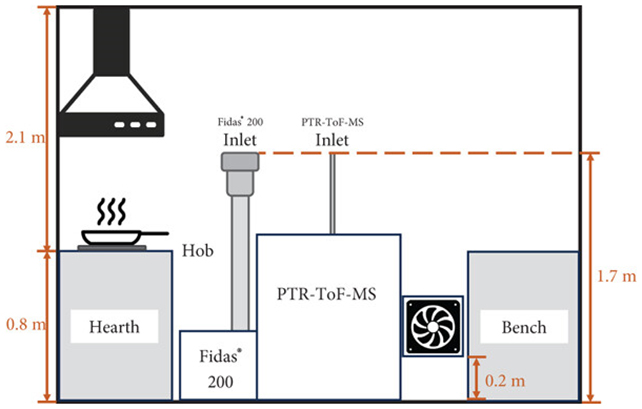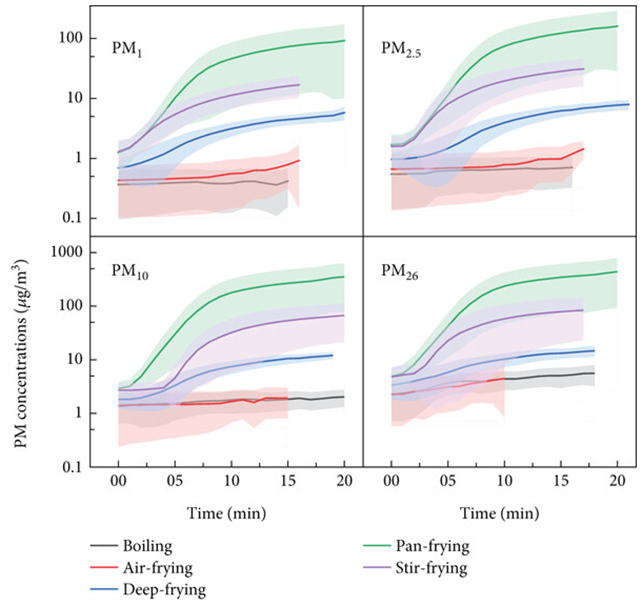
Yet the real problem may well be intractible just because good cooking demands searing on almost everything in order to produce flavor and sweetness.
Is there a way to use a votex capture system able to push the volitiles through a disposable filter.? And still be small enough?


Scientists Reveal a Very Compelling Reason to Use Your Air Fryer
08 December 2024
(Thai Liang/iStock/Getty Images Plus)
https://www.sciencealert.com/scientists-reveal-a-very-compelling-reason-to-use-your-air-fryer
Stir frying, deep fat frying, boiling, and pan frying food are all far more likely to pollute your home's indoors than the relative newcomer to the modern kitchen, the benchtop air fryer oven.
Researchers from the University of Birmingham in the UK and the Max Planck Institute for Chemistry in Germany set up a kitchen in their lab to see how the different methods compared when cooking chicken breast.
They measured levels of particulate matter (PM) between 0.18 and 26 microns (millionths of a meter), as well as levels of volatile organic compounds (VOCs); chemical pollutants found across foods, cleaning products, paint, and many other substances.

The researchers set up a special lab kitchen. (Tang et al., Indoor Air, 2024)
Ahead of the experiments, the team predicted oil-based cooking methods would emit comparably more pollutants than water-based methods, in part due to the Maillard reaction – the way oil browns food at higher temperatures.
"The cooking temperature was found to be the key factor that positively correlated with both PM and VOC emission strength, while the oil weight was negatively correlated with the PM levels," write the researchers in their published paper.
For PM, measurements were made in micrograms per cubic meter. Levels peaked at 92.9 for pan frying, 26.7 for stir frying, 7.7 for deep frying, 0.7 for boiling, and 0.6 for air frying – more than 150 times less than pan frying.

Particulate matter at different sizes was measured during and after cooking. (Tang et al., Indoor Air, 2024)
When it came to VOCs, these were measured in parts per billion. Here the peak figures were 260 for pan frying, 230 for deep frying, 110 for stir frying, 30 for boiling, and 20 for air frying, with the sizzling chicken in a stove-top frying pan shedding 13 times the quantity of volatile comounds than the air fryer.
Significantly higher indoor pollution was recorded for up to an hour after the 10-minute cooking session finished, and the researchers are keen to emphasize that it's important to keep the kitchen well ventilated during and after preparing food, no matter what cooking method you're using.
With air fryers becoming popular due to their speedy cooking time and lower energy and oil use, the findings give home chefs another reason to invest in one: a reduction in the kinds of indoor pollutants that have previously been associated with health problems such as respiratory infections, heart failure, and dementia.
"There are a number of factors that will affect the levels of pollution from cooking alongside the method used, including the amount of oil used, and the temperature of the stove," says University of Birmingham atmospheric scientist Christian Pfrang.
"Particles will remain in the air for quite some time after you have finished cooking, so continuing to ventilate, or keeping extractor fans turned on for a period of time will really help to avoid the build-up of this indoor pollution."
The research has been published in Indoor Air.
No comments:
Post a Comment